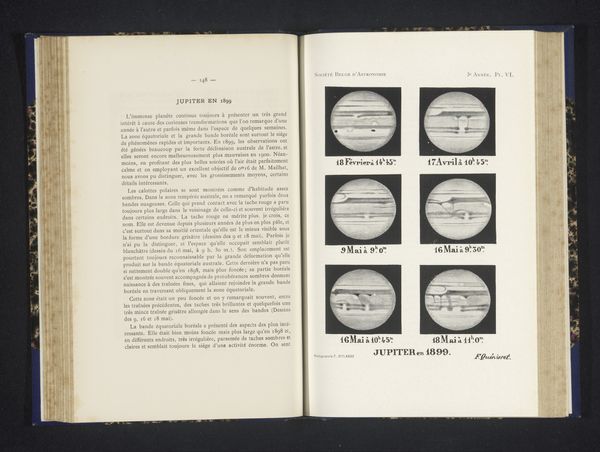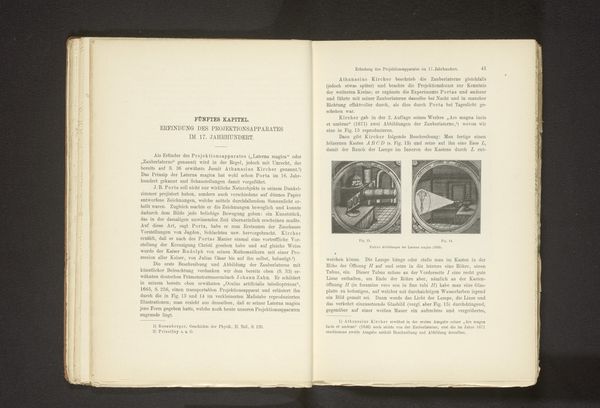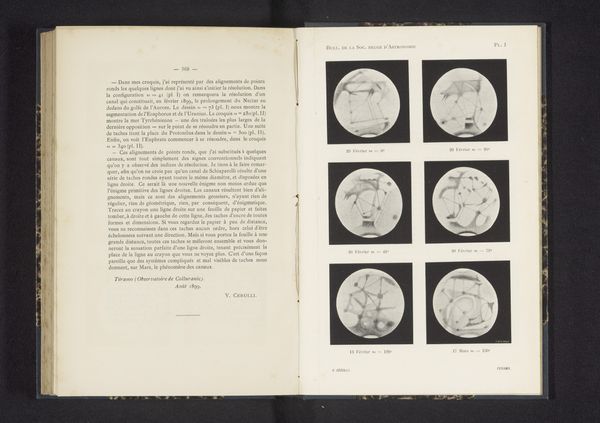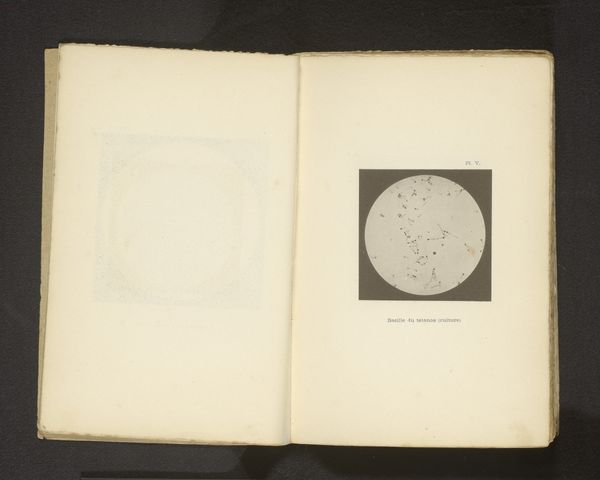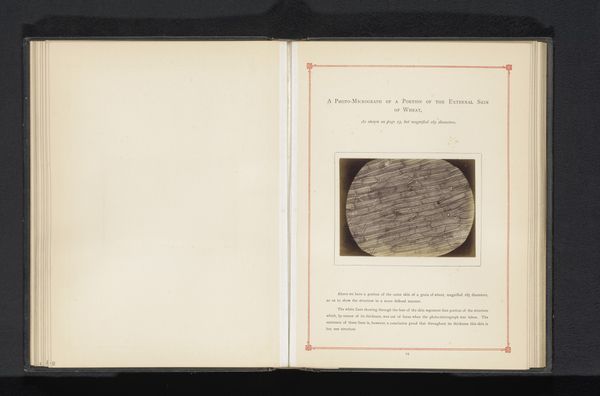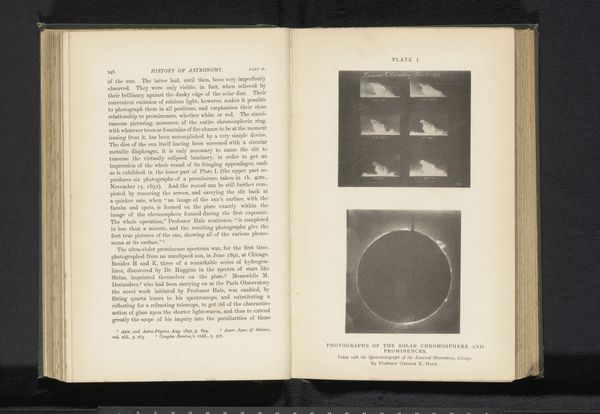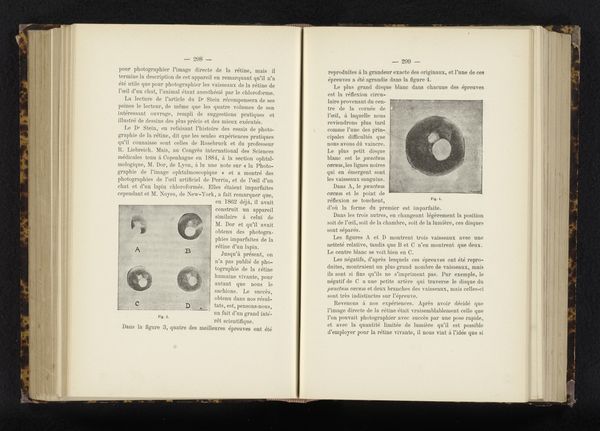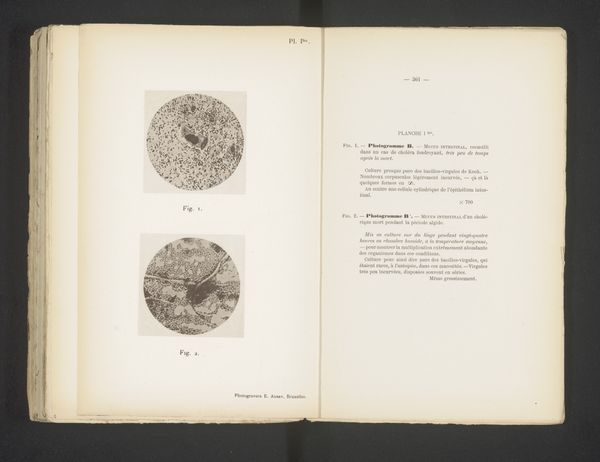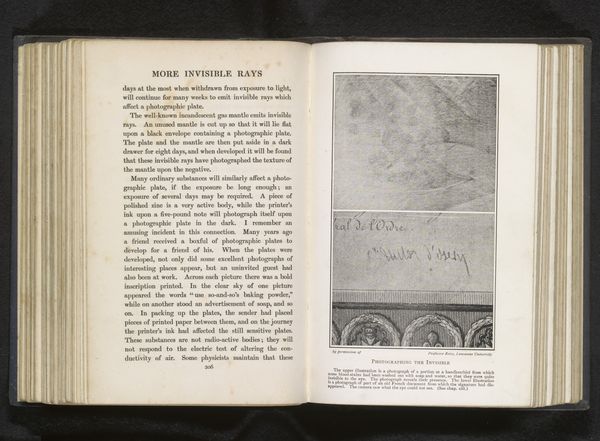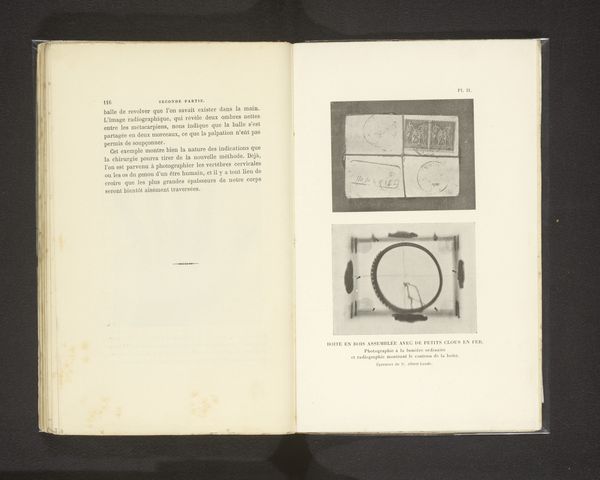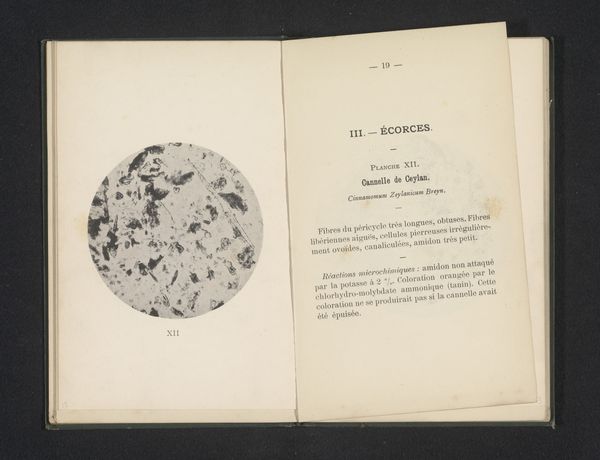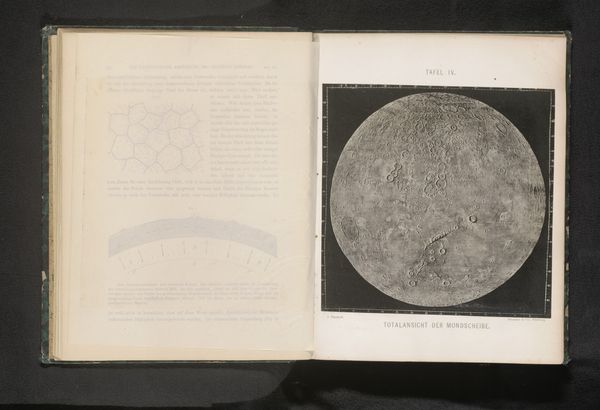
print, photography
#
still-life-photography
# print
#
photography
Dimensions: height 192 mm, width 122 mm
Copyright: Rijks Museum: Open Domain
Curator: This spread of photogravures presents four microscopic views of bacteria. Dating back to before 1908, this image invites us to reflect on the very nature of visibility and power. Editor: The image appears almost abstract. Considering when these images were made, they reflect the early days of understanding the microscopic world and also a very stark, almost unsettling depiction of unseen life forms. What do you see in this piece beyond scientific illustration? Curator: These images weren't simply neutral recordings; they were active participants in shaping knowledge and perceptions. What do these bacteria signify in a society grappling with disease, hygiene, and anxieties about the body? Who has the power to see, and who or what remains invisible? This relates to feminist and critical race theory, as marginalised groups throughout history have been "unseen," their stories and experiences actively ignored or suppressed. Consider the colonial context, where new forms of visualizing the body, disease and the "Other" are born out of microscopes and photographs like these. Editor: So you’re saying these images did more than just show bacteria, they played a role in constructing larger ideas about identity, power and perhaps even oppression? Curator: Precisely. This visualization may have affected the perception of different communities as vectors of disease. It might be interesting to think about the visual language used to create fear, justify discrimination, or reinforce existing power structures, all filtered through the objective lens of science. Editor: It's amazing how much history and social context can be embedded in even the seemingly simple representation of something like bacteria. Thanks for opening my eyes to all these issues! Curator: My pleasure. This is why interrogating art through an intersectional lens offers us a far more comprehensive, nuanced perspective.
Comments
No comments
Be the first to comment and join the conversation on the ultimate creative platform.
